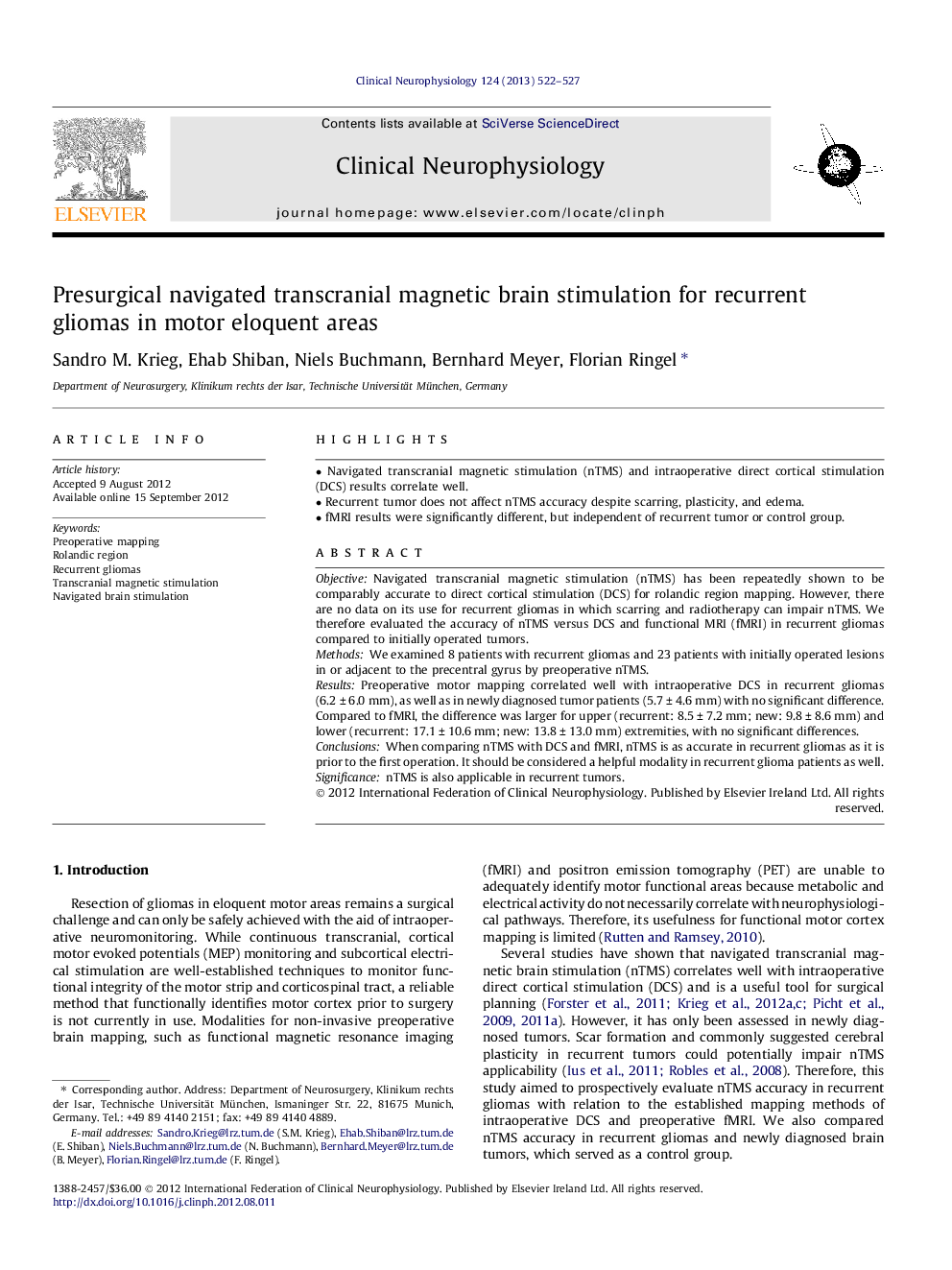| Article ID | Journal | Published Year | Pages | File Type |
|---|---|---|---|---|
| 3044364 | Clinical Neurophysiology | 2013 | 6 Pages |
ObjectiveNavigated transcranial magnetic stimulation (nTMS) has been repeatedly shown to be comparably accurate to direct cortical stimulation (DCS) for rolandic region mapping. However, there are no data on its use for recurrent gliomas in which scarring and radiotherapy can impair nTMS. We therefore evaluated the accuracy of nTMS versus DCS and functional MRI (fMRI) in recurrent gliomas compared to initially operated tumors.MethodsWe examined 8 patients with recurrent gliomas and 23 patients with initially operated lesions in or adjacent to the precentral gyrus by preoperative nTMS.ResultsPreoperative motor mapping correlated well with intraoperative DCS in recurrent gliomas (6.2 ± 6.0 mm), as well as in newly diagnosed tumor patients (5.7 ± 4.6 mm) with no significant difference. Compared to fMRI, the difference was larger for upper (recurrent: 8.5 ± 7.2 mm; new: 9.8 ± 8.6 mm) and lower (recurrent: 17.1 ± 10.6 mm; new: 13.8 ± 13.0 mm) extremities, with no significant differences.ConclusionsWhen comparing nTMS with DCS and fMRI, nTMS is as accurate in recurrent gliomas as it is prior to the first operation. It should be considered a helpful modality in recurrent glioma patients as well.SignificancenTMS is also applicable in recurrent tumors.
► Navigated transcranial magnetic stimulation (nTMS) and intraoperative direct cortical stimulation (DCS) results correlate well. ► Recurrent tumor does not affect nTMS accuracy despite scarring, plasticity, and edema. ► fMRI results were significantly different, but independent of recurrent tumor or control group.
